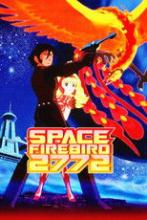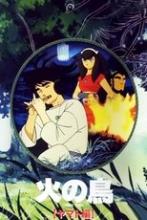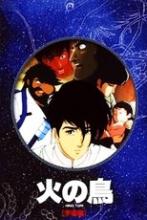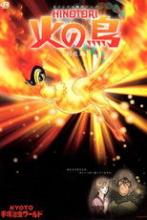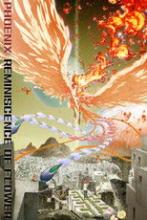
Phoenix Collection
Phoenix was Tezuka's life work as well as one of his representative works. He explored philosophical themes of "life and death" and "reincarnation" in depth by depicting stories developed around Phoenix, the immortal life-form beyond time and space. Phoenix navigates the readers by traveling back and forth, between past and future, through the series. Tezuka reflected his own historical view and prevision for future, also tackled a vast-scale question of what universe is.
The Phoenix (1978)
12 August, 1978
This extraordinarily complex film is not only a send-up of every samurai film ever made, it is also an extrapolation of the value of life. The Yamatai, represented by Prince Susano-O and elderly advisor Sumuke, hire Yumihiko of Matsuro to hunt the phoenix so that Queen Himiko, sister of Susano-O can have eteranal life.
Phoenix 2772 (1980)
15 March, 1980
Phoenix 2772 starts with twelve minutes without dialogue, much like a silent film, recalling the birth and education of Godo. In this brave new world, children are born in test tubes and are raised by computers and robots. Godo learns the skills that will make him into a great pilot, assisted by the robotic wonder Olga. Everything that Godo needs is provided for him until he eventually goes for training with his automaton companion. He soon realizes that the world is not what he expected...
Phoenix: Karma Chapter (1986)
20 December, 1986
The story of two men - sculptor genius Akanemaru, and former bandit Gao. Discover how the lives of the two men cross repeatedly throughout their lives, how they struggle with their own fate, and how they are forced to compete with each other for a great honour, when karma is the only prize.
Phoenix: Yamato Chapter (1987)
01 August, 1987
The story of a young prince and young princess from opposing tribes, as they struggle to deal with their lives and the hardship brought on by their position in their respective families.
Phoenix: Space Chapter (1987)
21 December, 1987
This is the third part of "The Phoenix" series of the Kadokawa Haruki Office Co., Ltd. version. It is an animation version of the original story by Tezuka Osamu that depicts the cruelty of love through the fate of spacemen destined to drift through the universe after losing their mother ship..
Phoenix (2004)
21 March, 2004
Hi no Tori is a collection of stories that all have something in common. The Phoenix, whose blood is believed to give an eternal life to one who drinks it. Therefore many seek to kill it, but as the Phoenix of the tale, it's reborn from the ashes. Stories take place in future and the past, where humans fight with each other as always, and everyone is afraid to die. But still, every story teaches a lesson: Life is beginning of an eternity, an never-ending cycle.
Phoenix: Robe of Feathers (2004)
17 July, 2004
Abandoned as a child, Zuku has become a brigand to survive. One night after committing a robbery, he is approached by a strange little girl who prompts him to visit the pine grove beach nearby. Upon arriving there, Zuku is surprised to discover an unconscious young woman covered in a sparkling veil. Enticed by its splendid material, he snatches the fabric and attempts to flee. But its owner unexpectedly awakens, begging him to return the precious accessory. With no other memory save for the veil's importance, the woman refuses to let Zuku leave without recovering it. Showing no remorse, the bandit violently renounces her plea—but little does he know, this unusual encounter will change his life forever.
PHOENIX: Reminiscence of Flower (2023)
03 November, 2023
From time immemorial to the age of space colonization, there is one legend that has stayed unchanged in every history book—the tale of the immortal bird Phoenix. A being whose blood is said to grant eternal life or wisdom, the radiant figure ensures the continuation of sentient life in the universe as it oversees human civilizations and their development. Yet, mankind remains a slave to its habits; from happiness and sorrow, to wrath and love, a myriad of emotions continue to play an integral part of human life. Simultaneously, time and time again, certain beliefs and agendas persist over the centuries to disturb the fragile equilibrium of the world's preordained nature and principles. It appears that fate and its dynamic variables can manifest itself in many ways—and oftentimes exhibits a bizarre sense of humor…


